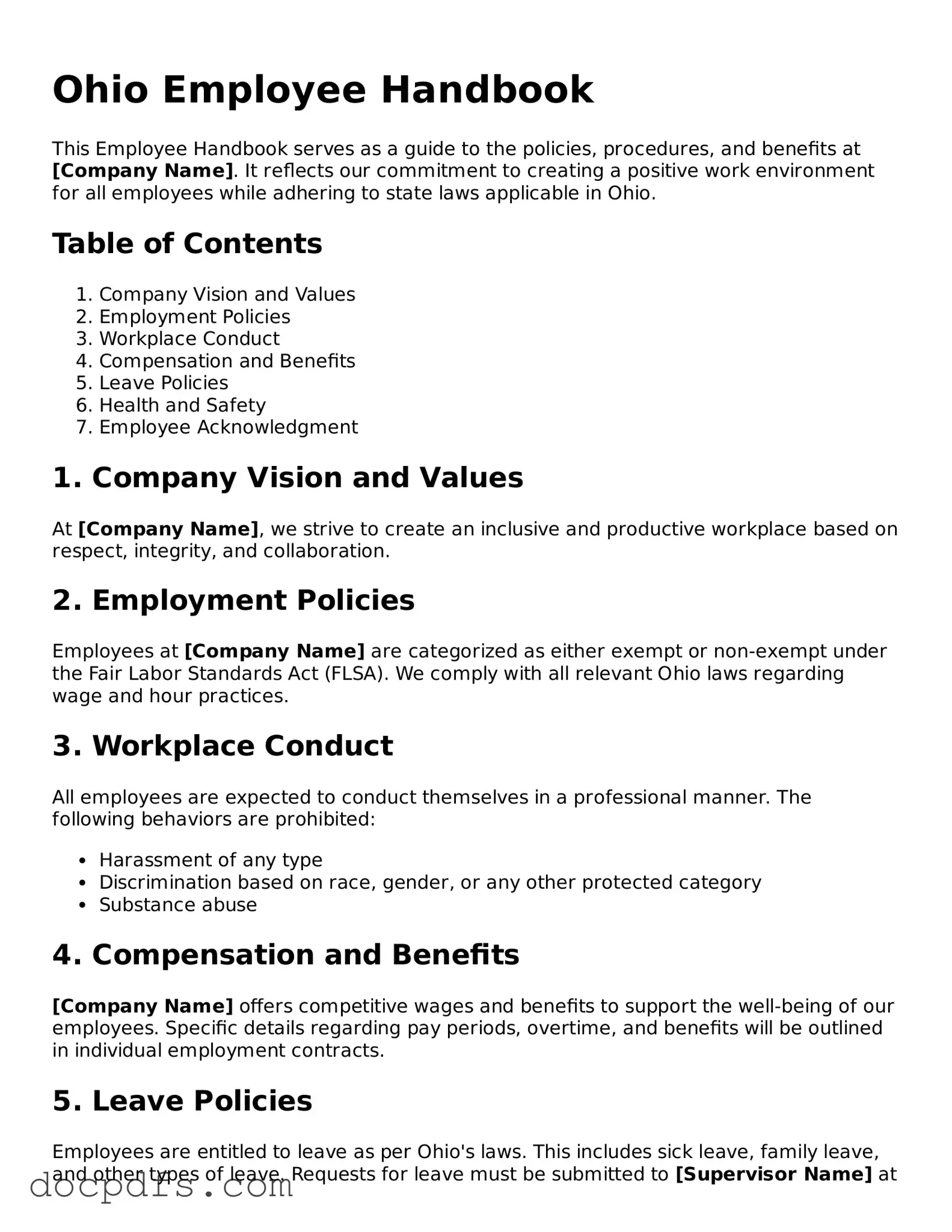The Ohio Employee Handbook form serves as a vital resource for both employers and employees, outlining essential workplace policies and procedures. This comprehensive document is designed to clarify expectations, rights, and responsibilities within the workplace, fostering a transparent and informed environment. It typically includes sections on company policies regarding attendance, code of conduct, anti-discrimination measures, and workplace safety. Additionally, the handbook may address benefits, including leave policies, health insurance options, and retirement plans. By providing clear guidelines, the form helps to minimize misunderstandings and potential conflicts, ensuring that employees are aware of their entitlements and obligations. Furthermore, it may also include information about the disciplinary process, performance evaluations, and avenues for addressing grievances, thereby promoting a culture of accountability and respect. Overall, the Ohio Employee Handbook form is an essential tool for establishing a positive workplace culture and ensuring compliance with state and federal regulations.
